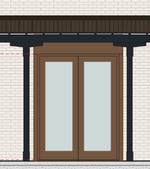dfus
Structural
- May 3, 2022
- 8
In TMS 402-16, sections 12.2.2.3.1.2 and 12.2.2.3.2 (sorry, dyslexics) limit the height of masonry veneer supported on wood to 12 ft, and require lintels over openings to be supported by non-combustible framing where the veneer isn't self-supporting. I point to these provisions semi-often to get architects to let me have a couple steel posts and a tube header, but since the veneer chapter re-write in the 2022 code, I don't see this addressed anywhere.
Am I overlooking it? If not, why would this restriction have been removed?
Thanks, and if this has been addressed somewhere already, I apologize. I couldn't find a relevant thread.
Am I overlooking it? If not, why would this restriction have been removed?
Thanks, and if this has been addressed somewhere already, I apologize. I couldn't find a relevant thread.


